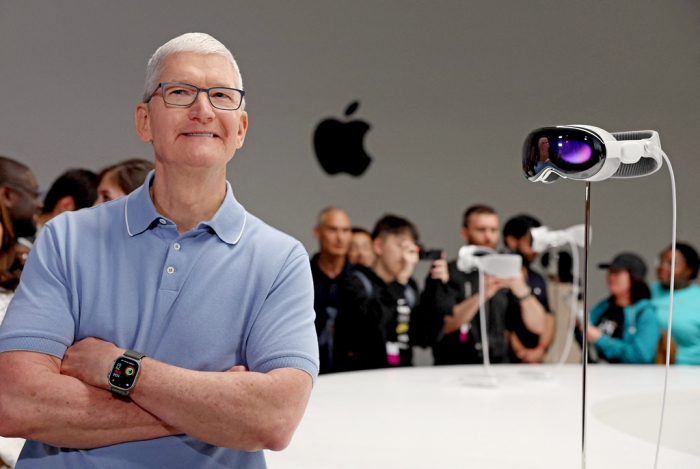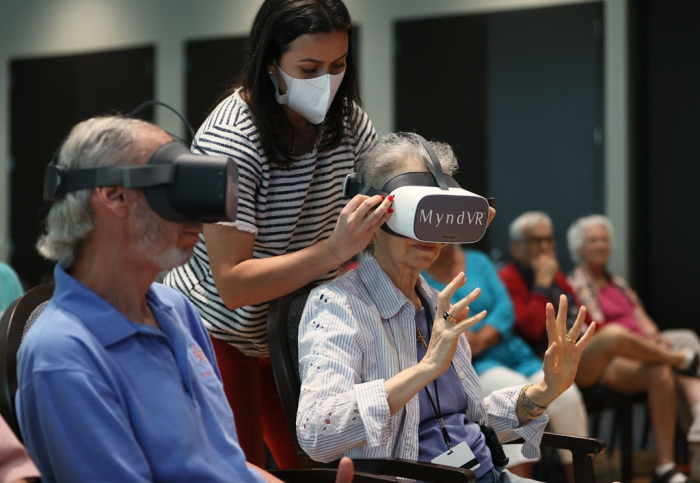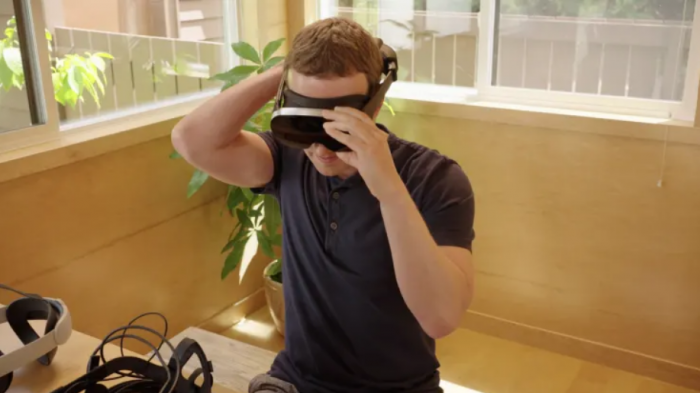Tech, Media & Telecom
Samsung, LG, Sony vie for mixed-reality OLED display market
The display makers are seeking tie-ups with leading chipmakers as the technology uses wafer substrates
By Jun 23, 2023 (Gmt+09:00)
3
Min read
Most Read
LG Chem to sell water filter business to Glenwood PE for $692 million


Kyobo Life poised to buy Japan’s SBI Group-owned savings bank


KT&G eyes overseas M&A after rejecting activist fund's offer


StockX in merger talks with Naver’s online reseller Kream


Mirae Asset to be named Korea Post’s core real estate fund operator



Samsung Display Co., LG Display Co. and Sony Corp. — the world’s three leading display panel makers — are ratcheting up efforts to take the lead in the fast-growing small organic light-emitting diode (OLED) screen market for virtual reality (VR) devices.
Competition is heating up after Apple Inc. earlier this month unveiled a much-anticipated mixed-reality (MR) headset, the Apple Vision Pro, in its first major hardware launch in nearly a decade.
For its MR headset display, Apple adopted Micro OLED, a next-generation display technology suitable for extended-reality (XR) wearable devices.
XR, a blanket term for a handful of related technologies that include VR, MR and augmented reality (AR), opens up a new era of highly immersive experiences that blur the line between the physical and digital worlds.
XR devices such as smart glasses enable 3-D virtual meetings and features such as live translated captions of foreign languages on the eyeglasses.
The Micro OLED used in the Apple Vision Pro is the size of a postage stamp.
Developed by Sony, the Micro OLED is said to have over 3,000 pixels — a pixel density that is six times higher than that of premium smartphone OLED displays.

GONE VIRAL
Micro OLEDs have gone viral these days in tandem with the takeoff of XR wearable devices.
Unlike conventional LCD or OLED panels, whose screens are being built on a glass substrate, the Micro OLED display screen is mounted directly on wafers.
By doing so, Micro OLEDs allow the production of thinner, more energy-efficient, self-illuminating displays with high luminous efficiency. Such features are especially suited for wearables designed to create virtual reality.
Industry watchers said demand for Micro OLED is growing as it is highly value-added.
The cost of the Micro OLED screen used in the Apple Vision Pro is estimated at $700, or 46.7% of the device’s total manufacturing cost of $1,500, according to tech media reports.
Market research firm Omdia recently forecast the global MR-related market growing from an estimated $6.9 billion this year to $20 billion by 2027.
According to market tracker Counterpoint Research, worldwide MR headset shipments are expected to rise from an estimated 50 million units this year to 150 million by 2025.

COLLABORATION WITH CHIPMAKERS
Micro OLED is also called OLEDoS, or OLED on Silicon, as it is manufactured by depositing OLED elements on the semiconductor material silicon wafer substrate.
Sony is said to have collaborated with Taiwan Semiconductor Manufacturing Company Ltd. (TSMC), the world’s largest chip foundry firm, to produce the Micro OLED for the Apple Vision Pro.
Samsung Display, an affiliate of Samsung Electronics Co., plans to begin mass production of Micro OLED panels at its dedicated production facility next year.
Last month, Samsung Display acquired a 100% stake in eMagin, a US micro-display maker, for $218 million to enhance its Micro OLED manufacturing capabilities.
Samsung Display CEO Choi Joo-sun recently said the company’s focus in coming years will be on securing next-generation display technology.
The company is also seeking to collaborate with Samsung Electronics' foundry business to develop new Micro OLED panels, sources said.
Meanwhile, LG Display unveiled its own Micro OLED prototype at CES 2023 in January.
The company is developing micro-displays in partnership with LX Semicon Co. and SK Hynix Inc.
LG Display is already supplying external OLED displays to Apple for its Vision Pro.
Industry officials said LG stands in line to supply internal displays for the Apple Vision Pro in the near future.
Write to Jeong-Soo Hwang at hjs@hankyung.com
In-Soo Nam edited this article.
More to Read
-
 ElectronicsSamsung Display buys US OLED microdisplay maker for $218 mn
ElectronicsSamsung Display buys US OLED microdisplay maker for $218 mnMay 18, 2023 (Gmt+09:00)
1 Min read -
 Tech, Media & TelecomSamsung’s next frontier: XR in partnership with Qualcomm, Google
Tech, Media & TelecomSamsung’s next frontier: XR in partnership with Qualcomm, GoogleFeb 02, 2023 (Gmt+09:00)
3 Min read -
 Tech, Media & TelecomSamsung Display to build Micro OLED line for VR, AR devices
Tech, Media & TelecomSamsung Display to build Micro OLED line for VR, AR devicesDec 21, 2022 (Gmt+09:00)
3 Min read -

Comment 0
LOG IN


